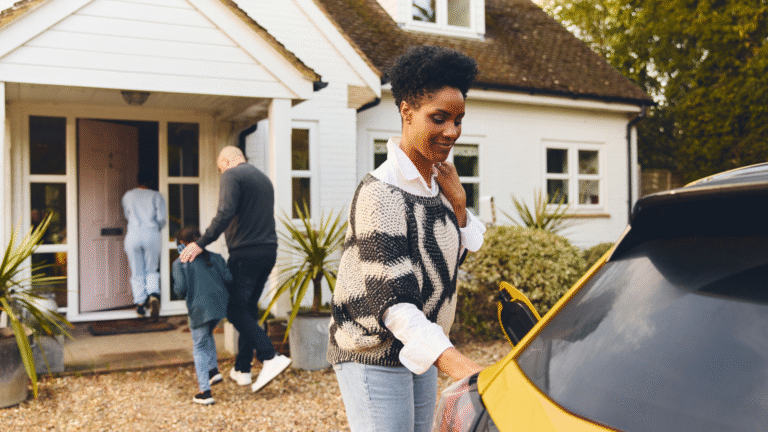Family road trips are a national pastime — and EVs are great for smooth, quiet, emissions-free travel. But travelling with kids requires extra planning: more stops, entertainment, snacks and contingency for lost chargers or delays. This guide gives practical, kid-tested strategies to make road trips in an EV calm, safe and enjoyable for the whole family on Aussie highways and scenic routes.
Table of Contents
- Pre-trip planning: range, charging and route design
- Packing smart: gear that makes a difference with kids
- In-car comfort, entertainment and safety
- Stopping strategy: timing, locations and activities
- Food, hydration and motion-sickness tips
- Emergencies and backup plans
- FAQs
- Conclusion
1. Pre-trip planning: range, charging and route design
- Map charging around activities: Plan stops at chargers near playgrounds, picnic spots or attractions so kids can expend energy while the car charges.
- Spacing of chargers: On highways aim for chargers 100–150 km apart where possible. Plan contingency stops and note each station’s power rating and availability.
- Plan for slower periods: Avoid charging at peak meal times in busy spots — queues can stress kids.
- Charge overnight where possible: Starting the day with a full battery reduces pressure for mid-day stops.
Use route planners that include charging times and realistic battery consumption estimates for your vehicle.
2. Packing smart: gear that makes a difference with kids
- Portable charger and adapters: Take the supplied portable EVSE and any vendor-specific adapters you might need.
- Activity kit: Tablets with pre-downloaded shows, headphones, books, stickers and magnetic puzzles.
- Comfort items: Blankets, neck pillows, favourite soft toys and a small first-aid kit.
- Snacks and drinks: A mix of healthy and fun treats to prevent hunger meltdowns.
- Sun protection: Roll-up shades for windows to keep little ones cool and comfortable.
- Portable potty or nappy-change kit: Useful for long stretches with limited facilities.
A small soft-sided bag of “trip only” toys works wonders.
3. In-car comfort, entertainment and safety
- Car seat and booster considerations: Ensure car seats are correctly fitted and are comfortable for long hours. Bring a second seatbelt extender if needed (check compatibility).
- Charging-friendly activities: Use charging stops as activity windows — short walks, a playground, or a picnic.
- Rotate drivers and helpers: If you have two adults, rotate who gets a quiet hour to rest—this reduces fatigue.
- Seat-back organisers: Keep snacks, tissues, wipes and toys within reach without constant stops.
Quiet time apps, audiobooks and family-friendly podcasts make long stretches more enjoyable.
4. Stopping strategy: timing, locations and activities
- Frequent short stops vs fewer long stops: Younger kids benefit from movement more frequently. Plan a 10–20 minute play break every 60–90 minutes where possible.
- Charge during meal or activity stops: Aim to charge while your kids play or when you’re eating to make the most of dwell time.
- Scout kid-friendly chargers: Look for chargers at cafes, visitor centres or caravan parks with safe play areas.
- Reserve accommodation with chargers: Book rooms with destination charging to avoid last-minute searches.
Turn each charging stop into a mini-adventure — it helps the time pass quickly.
5. Food, hydration and motion-sickness tips
- Light meals and avoid sugar spikes: Heavy or sugary meals can make kids uncomfortable or hyperactive.
- Hydration: Keep water accessible; dehydration makes kids irritable and worsens motion sickness.
- Motion-sickness remedies: Position older kids to face forward (not reclining) and keep fresh air flowing. Ginger candies or wristbands help some kids.
- Snack strategy: Offer small frequent snacks rather than a single large meal.
Plan mealtimes around long charging intervals for efficiency.
6. Emergencies and backup plans
- Have a backup charger list: Apps often show offline status—identify alternates before you leave each leg.
- Roadside assistance: Ensure your policy includes EV recovery and battery-specific help.
- Emergency contact & med kit: Keep local emergency numbers and a small first-aid kit handy.
- Power bank for devices: Keep at least one fully charged power bank for entertainment devices when you can’t immediately charge the car.
Calm contingency plans ease panic — reassuring for kids and adults alike.
FAQs
Q: How do I keep kids occupied during short charging stops?
A: Plan small activities like scavenger hunts, playground time or short nature walks that let them burn energy while the car charges.
Q: What if a charger is busy and kids are restless?
A: Have a list of nearby cafes, parks or safe spots to wait. Carry small games and distraction packs for short delays.
Q: Are EVs safe for kids in hot Australian summers?
A: Yes — EVs’ climate control systems are effective. Pre-cool the car while plugged in and use shades and hydration to keep kids comfortable.
Conclusion
Travelling with kids in an EV is entirely feasible and can be even more pleasant than with a petrol car — quieter cabins, smoother acceleration and cleaner air on board all help. The trick is planning: align charging stops with activities, pack smart for comfort and entertainment, and have backup charging options ready. With thoughtful route design and a flexible mindset, family EV trips across Australia can be relaxed, memorable and fun for everyone.
Meta description: Family road trip in an EV? Discover planning tips, packing lists, kid-friendly charging stops and motion-sickness strategies to keep Australian EV journeys calm and fun.
